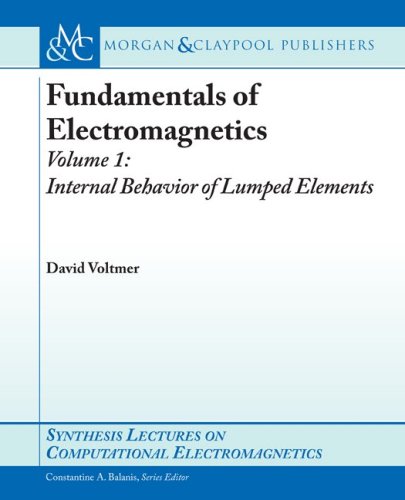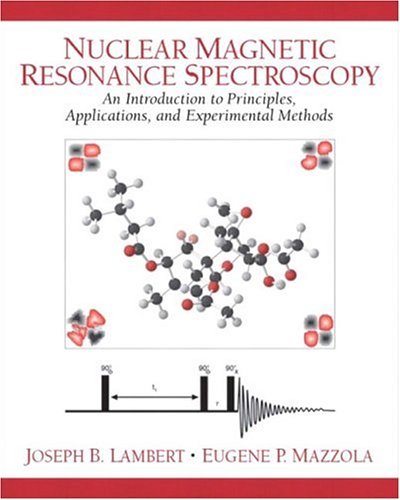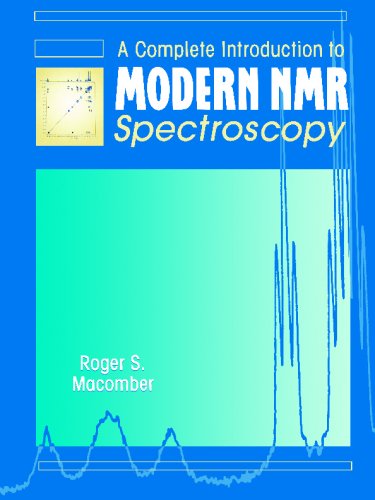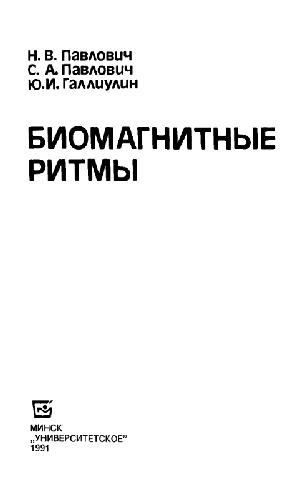Hong Yan0824706536, 9780824706531, 9780203908785
Table of contents :
Signal Processing for Magnetic Resonance Imaging and Spectroscopy……Page 1
Series Introduction……Page 3
Signal Processing and Communications……Page 5
Preface……Page 7
Contributors……Page 13
Contents……Page 10
1.1 Basic Imaging Equation……Page 18
Contents……Page 0
1.2 Sampling Requirements of k-Space Signals……Page 19
1.3 Feasible Reconstructions……Page 23
2.1.1 Reconstruction Formulas……Page 24
2.1.2 Image Characteristics……Page 26
2.2.1 Two- Dimensional Radon Transforms……Page 30
2.2.2 Filtered Back- Projection Reconstruction……Page 33
3 CONCLUSION……Page 37
REFERENCES……Page 38
1 INTRODUCTION……Page 41
2.2 Reconstruction……Page 44
2.3 Nonlocality of RT Inversion……Page 45
3.1 Continuous Wavelet Transform……Page 46
3.2 Multiresolution Wavelet Representation……Page 47
3.3 Wavelet Reconstruction from the Projection Data……Page 50
4 LOCAL RECONSTRUCTION……Page 53
5 IMPLEMENTATION……Page 62
6 WAVELET RECONSTRUCTION IN FAN- BEAM GEOMETRY……Page 66
REFERENCES……Page 72
1 INTRODUCTION……Page 74
2 ACQUISITION OF k-SPACE DATA ON NON-CARTESIAN GRIDS……Page 76
3 DIRECT RECONSTRUCTION AND THE INTEGRAL FOURIER TRANSFORM……Page 80
4 REGRIDDED RECONSTRUCTION……Page 81
5 REGRIDDING AND DIRECT RECONSTRUCTION COMPARED……Page 86
6 THE GRIDDING POINT SPREAD FUNCTION FOR ROSE SAMPLING……Page 91
7 CONCLUSION……Page 96
APPENDIX: MATHEMATICAL CONVENTIONS USED IN THIS CHAPTER……Page 99
REFERENCES……Page 102
1 INTRODUCTION……Page 105
1.1 Imaging Cardiac Motion……Page 106
1.2 Mapping Velocity with Phase Contrast MRI……Page 107
1.3 Analyzing Motion……Page 110
2.1 The Spatiotemporal Finite Element Model……Page 113
2.2 The DMESH Tracking Algorithm……Page 115
2.3 Reproducibility Analysis……Page 117
2.4 Lagrangian Strain Field Computation……Page 118
2.5 Extended Use of DMESH Tracking……Page 119
3.1 Computer Simulation Studies……Page 120
3.2 In Vitro and In Vivo Studies……Page 123
3.3 Combined Use of Displacement and Velocity Data……Page 127
4 DISCUSSIONS……Page 131
REFERENCES……Page 133
1 INTRODUCTION……Page 138
1.1 Fourier Transform Imaging……Page 140
1.2 Motion Artifacts in MRI……Page 141
1.3 Review of Projection onto Convex Sets……Page 144
2 ROTATIONAL MOTION MODEL……Page 148
3 MOTION PARAMETER ESTIMATION……Page 149
3.1 Similarity Criterion……Page 150
3.3 Lookup Table……Page 153
4 DATA CORRECTION……Page 156
4.1 Management of Overlap Data……Page 158
4.2 Iterative Estimation of Missing Data……Page 160
4.3 Reliability of Convex Sets……Page 161
4.4 Fuzzy POCS……Page 163
4.5 Fuzzy Convex Sets……Page 165
4.6 Fuzzy Data Model……Page 167
4.7 Regularization Using Fuzzy POCS……Page 169
5 SIMULATION RESULTS……Page 170
6 SUMMARY……Page 173
REFERENCES……Page 177
1 INTRODUCTION……Page 180
2.1 Introduction……Page 181
2.2.1 Tagging with Saturation Planes……Page 184
2.2.2 Tagging with Spatial Modulation of Magnetization ( SPAMM)— Standard SPAMM……Page 186
2.2.3 Tagging with DANTE Pulse Sequences……Page 188
2.2.4 Variable Distance Tagging……Page 193
2.2 Generation of the Tagging Pattern……Page 182
2.3 Imaging of the Tagging Pattern Motion……Page 194
2.3.1 Segmented k-Space Gradient Recalled Echo……Page 195
2.3.2 Echo Planar Imaging and Spiral Scanning……Page 197
REFERENCES……Page 199
1 INTRODUCTION……Page 202
2 CORTICAL SURFACE VISUALIZATION……Page 203
2.1 The Shape of the Cortical Surface……Page 205
2.2 Flattening Algorithm……Page 207
3 RAPID CALCULATION OF ACTIVITY MAPS: k-CORRELATION……Page 209
3.1.1 K-Covariance and k-Correlation……Page 211
3.1.2 Standard Deviation Map Estimates……Page 213
3.2.1 Information in the o-space Phase……Page 215
3.2.2 Signal- to- Noise Measurements……Page 216
3.2.3 Restricting Phase Maps Using Magnitude and Complex Correlation Maps……Page 217
REFERENCES……Page 220
1 INTRODUCTION……Page 222
2.1 Linear Scale Space……Page 225
2.2 Hyperstack Multiscale Linking Model……Page 226
3.1.1 Gradient Dependent Diffusion……Page 228
3.1.2 Sampling the Multiscale Stack……Page 229
3.2.1 Geometrical Scale Spaces……Page 230
4 RESULTS……Page 232
4.1 Simulated 3- D MR Brain Data……Page 233
4.2 Two- Dimensional MR Patient Data……Page 234
4.3 Three- Dimensional MR Patient Data……Page 236
5 SUMMARY……Page 243
REFERENCES……Page 246
1 INTRODUCTION……Page 252
2 CELLULAR MODELING OF THE CORTEX……Page 254
3.2.1 Principle……Page 256
3.2.3 Surface Deformation……Page 259
4 RESULTS……Page 262
5 CONCLUSION……Page 263
REFERENCES……Page 266
1 INTRODUCTION……Page 268
1.1 Spatial and Feature Domain Representations……Page 271
2.1 Registration……Page 272
2.2 Warping……Page 274
2.3 Intracranial Segmentation……Page 275
2.4 Nonuniformity Correction……Page 277
2.4.1 Tissue Inhomogeneities……Page 279
2.5 Noise Suppression ( Image Restoration)……Page 280
3 FEATURE SELECTION OR EXTRACTION……Page 281
3.3 Angle Images……Page 283
3.4.1 Problem Formulation……Page 284
3.4.2 Solution……Page 286
3.5 Discriminant Analysis Images……Page 287
4.1 Decision Engine……Page 288
4.2 Supervised Methods……Page 294
4.3 Unsupervised Methods……Page 299
4.3.1 ISODATA Algorithm……Page 300
5 TISSUE CLASSIFICATION AND CHARACTERIZATION……Page 302
6.2 Phantoms……Page 303
6.4 Human Studies……Page 304
7.1 Accuracy and Reproducibility……Page 305
7.2 Similarity Index……Page 310
7.4 Comparison to Biopsy……Page 311
8 EFFECTS OF MRI PROTOCOLS……Page 312
9 A TISSUE CHARACTERIZATION APPLICATION……Page 315
10 DISCUSSION……Page 316
REFERENCES……Page 322
1 INTRODUCTION……Page 329
2 GRAY MATTER SEGMENTATION……Page 331
2.1.1 Segmenting White Matter and CSF……Page 332
2.1.2 Selection of Cortical White Matter……Page 334
2.1.3 White Matter Topology……Page 336
2.1.4 Gray Matter Computation……Page 337
3.1 Introduction……Page 340
3.2 Additional Background on Anisotropic Diffusion……Page 343
3.3.2 Anisotropic Diffusion of Posterior Probabilities……Page 344
3.3.3 Examples……Page 346
3.4 Discussion……Page 347
REFERENCES……Page 348
1 INTRODUCTION……Page 352
3 SUPERVISED LEARNING APPROACHES……Page 353
3.1 LVQ Classifier……Page 354
3.2 Back- Propagation ANN Classifier……Page 356
4 UNSUPERVISED APPROACHES……Page 357
4.1 Self- Organizing Feature Map ( SOFM)……Page 358
4.1.2 Feature Map Classification……Page 360
4.1.3 Extracting the Cerebrum……Page 361
5.1.1 Results of LVQ ANN Approach……Page 364
5.2 Results of Unsupervised Segmentation Approaches……Page 365
5.2.2 Results of the c- Means Clustering Algorithm……Page 368
6 DISCUSSION AND CONCLUSION……Page 371
REFERENCES……Page 373
1 INTRODUCTION……Page 376
2.1 Introduction……Page 378
2.2.1 Gaussianity……Page 379
2.2.2 Dependence……Page 380
2.2.3 Stationarity……Page 381
2.2.4 Ergodicity……Page 382
2.3.1 Stochastic Regularization and Markovian Property……Page 383
3.1 Introduction……Page 384
3.2.1 Pixel Modeling……Page 386
3.2.2 Context Modeling……Page 387
3.3.1 Parameter Estimation……Page 389
3.3.2 Model Order Selection……Page 391
3.3.3 Segmentation……Page 393
4 ALGORITHM AND EXPERIMENT……Page 396
REFERENCES……Page 406
1 INTRODUCTION……Page 411
3 FREQUENCY ANALYSIS– BASED METHOD FOR DETECTING ACTIVATION SIGNALS……Page 415
4 ACTIVATION SIGNAL DETECTION USING LPCA……Page 423
REFERENCES……Page 436
I INTRODUCTION……Page 438
2 CARDIAC MOTION SIMULATOR……Page 441
3.1 Coupled B- Snake Grids……Page 443
3.1.1 Validations……Page 447
3.2 Constrained Thin- Plate Spline Warps……Page 448
3.2.1 Validations……Page 455
4 MEASUREMENT OF 3- D MOTION OF MYOCARDIAL BEADS……Page 458
4.2 Reconstruction of Tag Planes from Coupled B- Snake Grids……Page 468
4.3 Computing Time- Dependent Coordinates of Material Points……Page 470
4.4 Validations……Page 473
ACKNOWLEDGMENTS……Page 480
REFERENCES……Page 481
1 INTRODUCTION……Page 484
1.1 Model Function……Page 485
1.2 The Concept of Prior Knowledge……Page 486
2.1 Interactive Methods……Page 487
2.2 Black- Box Methods……Page 490
2.2.1.1 Basic Theory — Noiseless Data…….Page 491
2.2.1.2 Noisy Data — Suboptimal Solutions…….Page 492
2.2.1.3 Noisy Data — ML Solutions…….Page 493
2.2.2.1 Basic Theory — Noiseless Data…….Page 497
2.2.2.2 Noisy Data — Suboptimal Solutions…….Page 498
2.3 Note……Page 499
2.4 Summary and Additional Remarks……Page 500
3.1 Corrections for Model Imperfections……Page 501
3.2 Removal of Unwanted Components……Page 503
3.2.1 Removal of Components Separated in Frequency……Page 505
5 EXAMPLES……Page 507
6 CONCLUSIONS……Page 508
ACKNOWLEDGMENTS……Page 509
REFERENCES……Page 511
1 INTRODUCTION……Page 517
2 A MATHEMATICAL MODEL OF THE MULTIDIMENSIONAL NMR SIGNAL……Page 519
3 SPECTRAL FOLDING AND BASELINE DISTORTION IN THE DFT NMR SPECTRA……Page 520
4 THREE- DIMENSIONAL MAXIMUM ENTROPY METHOD……Page 523
5 LINEAR PREDICTION IN MULTIDIMENSIONAL NMR SIGNAL PROCESSING……Page 527
6 PHASE AND DAMPING FACTOR CONSTRAINED LINEAR PREDICTION……Page 531
7 FORWARD- BACKWARD LP METHOD……Page 534
8 TWO- DIMENSIONAL LINEAR PREDICTION……Page 535
9 SOLVENT SUPPRESSION BY SVD……Page 538
10 ITERATIVE QUADRATIC MAXIMUM LIKELIHOOD METHOD……Page 541
11 MULTIDIMENSIONAL NMR SIGNAL PROCESSING BY MATRIX PENCIL……Page 543
12 CONCLUSION……Page 547
REFERENCES……Page 548
1 INTRODUCTION……Page 552
2 CHEMICAL SHIFT IMAGING ( CSI)……Page 554
3 SPECTRAL LOCALIZATION BY IMAGING ( SLIM) AND GENERALIZED SPECTRAL LOCALIZATION BY IMAGING ( GSLIM)……Page 555
4 SPECTRAL LOCALIZATION WITH OPTIMAL POINT SPREAD FUNCTION ( SLOOP)……Page 559
5 ALTERNATIVE K-SPACE SAMPLING METHODS……Page 562
6 ESTIMATION OF UNSAMPLED VALUES OF……Page 563
7 CONSTRAINED RECONSTRUCTION……Page 565
8 ECHO- PLANAR SPECTROSCOPIC IMAGING……Page 569
REFERENCES……Page 570
1 INTRODUCTION……Page 575
2 PATTERN RECOGNITION OF MRS DATA FOR INVESTIGATING BRAIN TUMORS……Page 578
3 SYSTEMATIC METHODOLOGIES FOR TISSUE DISCRIMINATION WITH 1H SPECTRA……Page 579
3.2 Dimensionality Reduction……Page 584
3.3 Performance Evaluation……Page 586
3.4 Modelling Uncertainty……Page 589
3.5 Visualization……Page 591
5 CONCLUSION……Page 592
REFERENCES……Page 593
1 INTRODUCTION……Page 595
2 DATA PROCESSING……Page 597
2.1 Wavelets and Wavelet Packets……Page 598
2.2 Wavelet Packet Decomposition in……Page 601
3 SIMULATIONS……Page 605
3.1 Synthetic FID Signal……Page 606
3.2 Phantom Study……Page 609
4 PATIENT DATA……Page 610
5 CONCLUSIONS……Page 611
REFERENCES……Page 614
1 INTRODUCTION……Page 618
2.1 The Likelihood Function……Page 620
2.2 CRBs on Parameter Estimates……Page 621
2.4 Model Functions……Page 622
3.1 Singlets or Isolated Peaks……Page 623
3.2 Overlap Effects……Page 624
3.3 Influence of Prior Knowledge……Page 627
3.4 CRBs on Parameters of Peaks in the Presence of a Background Signal……Page 630
4.1 The Generalized Crame ´ r– Rao Theorem……Page 634
4.2 CRB on the Amplitude of a Nondescript Peak……Page 635
4.2.1 Simulation……Page 636
4.3.2 Real- World Application……Page 638
6 CONCLUSIONS……Page 641
REFERENCES……Page 642







Reviews
There are no reviews yet.